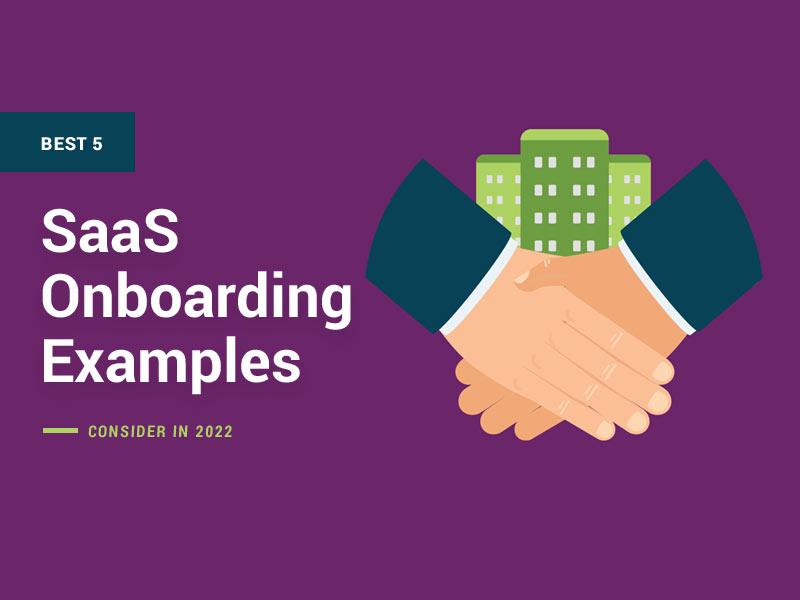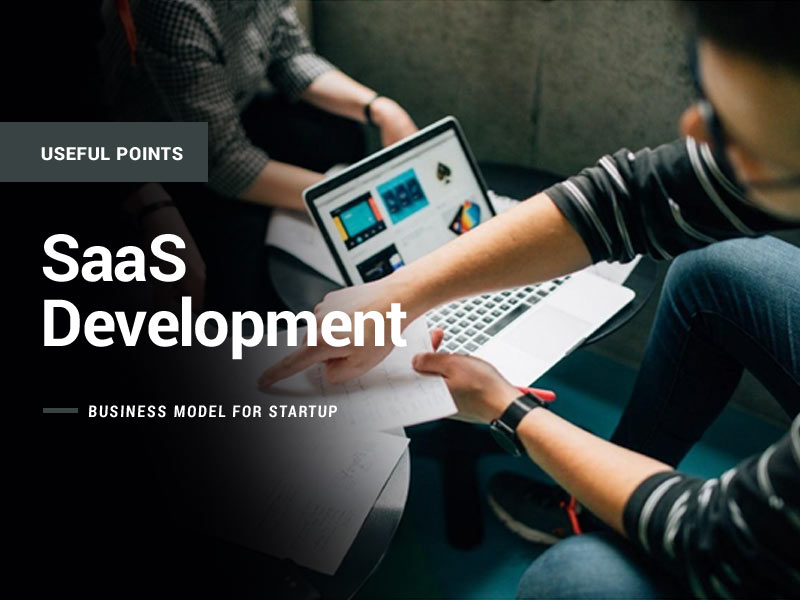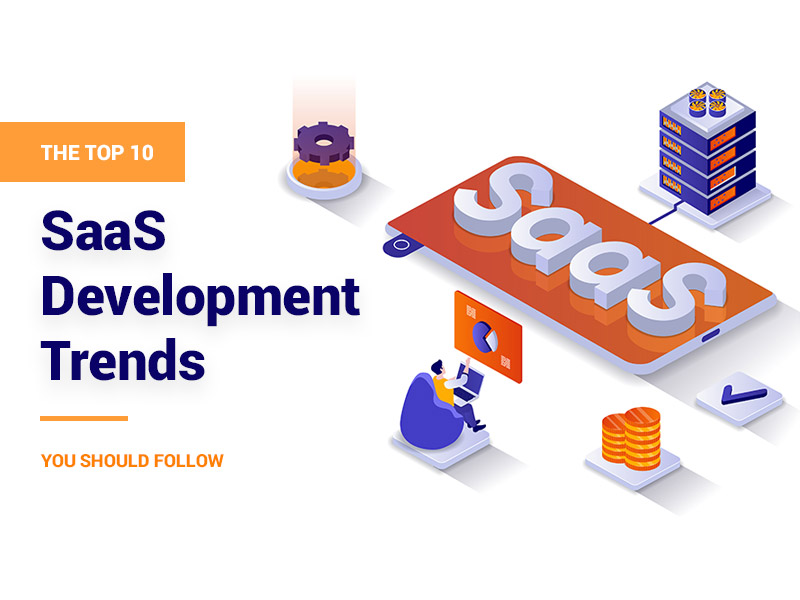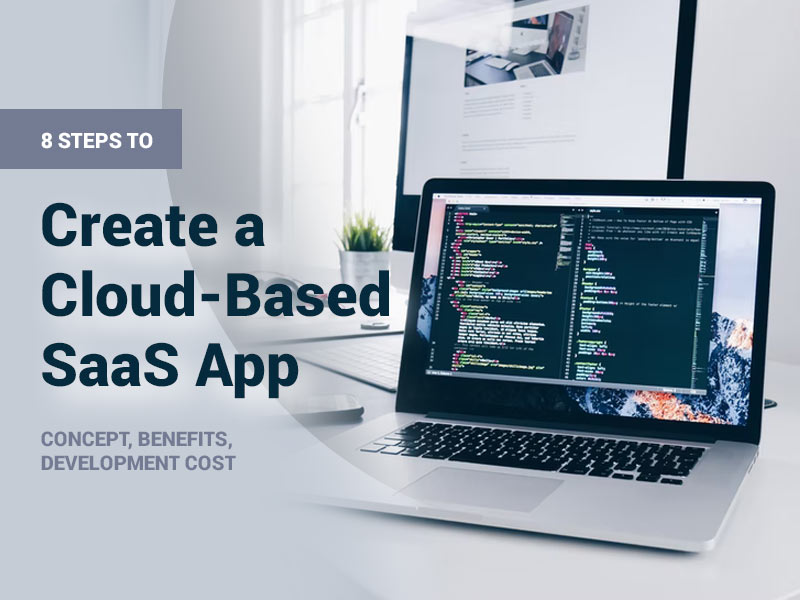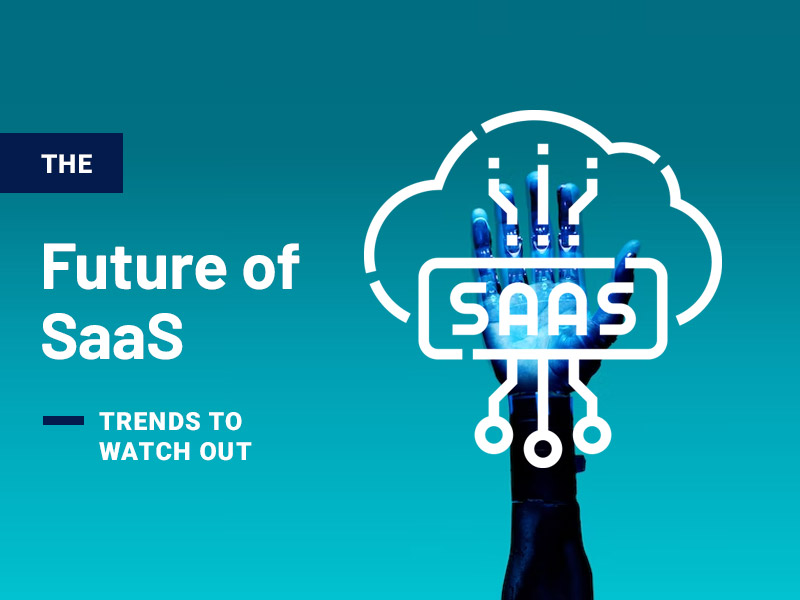If you run a SaaS company, one of your first goals is probably to let customers understand and appreciate your product.
In fact, if users don’t understand how to use it, you’re likely to experience a loss in customer satisfaction, a decline in sales, and a rise in churn.
For this reason, many SaaS companies create SaaS onboarding strategies that ensure their products and features are acknowledged by the users.
If you’re new to this concept but want to know more, continue reading.
In this article, we’ll provide you with the best five SaaS onboarding examples to consider in 2022.
So let’s dive in.
What is SaaS onboarding?
A SaaS onboarding process helps new users feel comfortable using the product or service your company provides, as well as understand the value of the product or service.
What are the benefits of SaaS onboarding?
Almost all companies develop and implement SaaS onboarding practices. This is probably due to the benefits it brings. Let’s take a look at some of the most relevant advantages.
Reduced churn rate
In simple terms, the churn rate refers to the number of customers leaving a business over a given time.
Churn rates can increase for a variety of reasons. Most commonly, it refers to the fact that users do not know how to use your product or some of its features, and there is no information on the web that can assist them.
Implementing a SaaS onboarding strategy will therefore prevent this from happening, resulting in a lower churn rate.
Increased customer satisfaction
In the process of understanding and smoothly using your product, customers’ overall satisfaction level will increase, and they will be more inclined to continue doing business with you, possibly converting into loyal customers.
Increase in sales
Increased customer satisfaction can also result in an increase in sales for your company. As users gain a deeper understanding of your product, they may be more willing to pay for additional features and subscription plans.
5 Best SaaS onboarding examples to look out for in 2022
Below is a list of the top five SaaS onboarding examples in 2022 from popular tools and platforms.
SaaS onboarding example #1: Appcues
Appcues allows companies to quickly and easily create onboarding strategies. Essentially, it allows product-led teams to measure and improve adoption without requiring coding skills or developer intervention.
Rather than merely offering onboarding services, Appcues also has its own onboarding strategy.
Its homepage displays a clear and appealing CTA “start free”, while providing a “How it works” section that lets users know exactly how the product works.
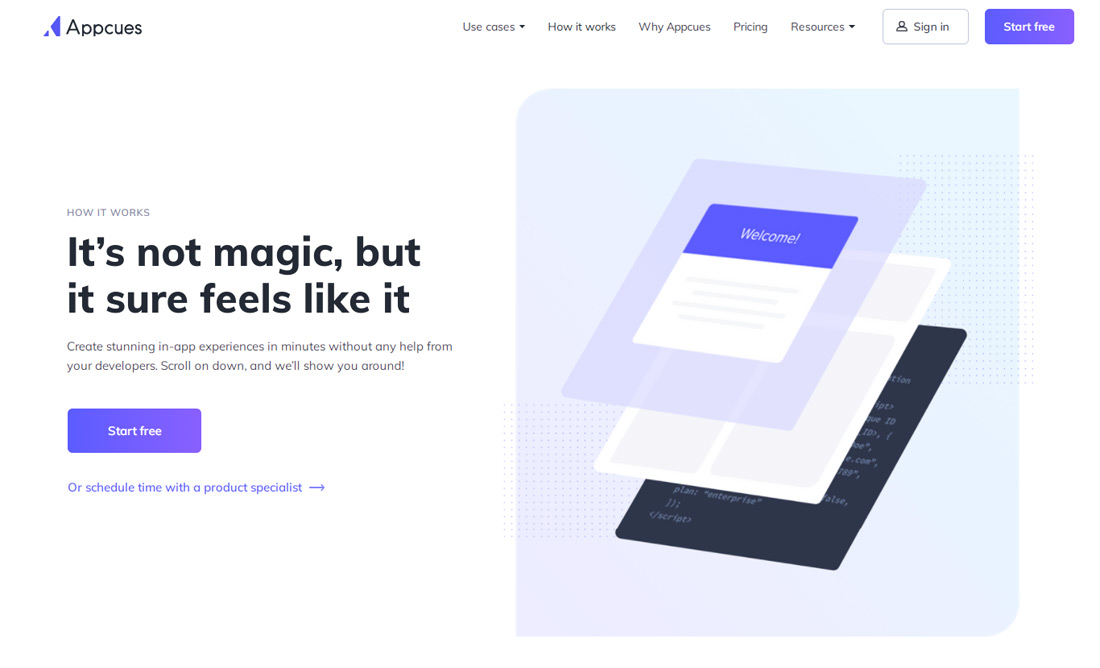
Visitors to the How it works page will find an overview of the product and a step-by-step guide that explains how to use it from beginning to end.

Moreover, Appcues includes a Help Center section that features articles on every step a user might experience throughout their entire customer journey from the beginning, when they’re new users, to when they’re effectively using the product.
For instance, Appcues offers guides to help new users get set up and set up an account while existing clients can also access articles on analytics and other advanced topics.

During the free trial, the user is guided step-by-step through various flows and checklists with each step involving a specific action, from installing the builder to checking the analytics.

SaaS onboarding example #2: Airtable
Airtable is a simple Project Management tool that integrates and consolidates data in spreadsheets and provides collaboration capabilities to business teams.
Upon signup, Airtable begins the onboarding process by asking a few questions to understand the users better, and then offers a customized experience, depending on, for instance, the industry they operate in.
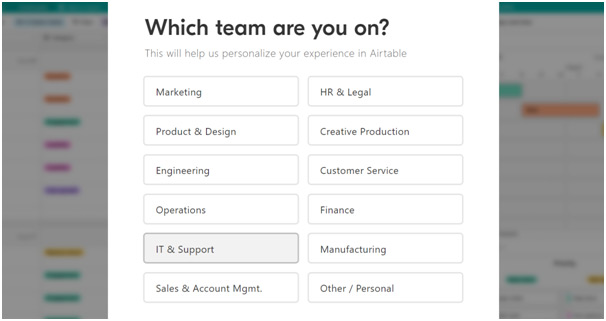
Users are then taken to the worksheets, where they can use the user-friendly interface and take advantage of guides that will let them navigate and discover all the features offered by the platform.
In addition to that, Airtable offers a comprehensive Help section where users can find a collection of guides for every level of experience, from beginners to experts.
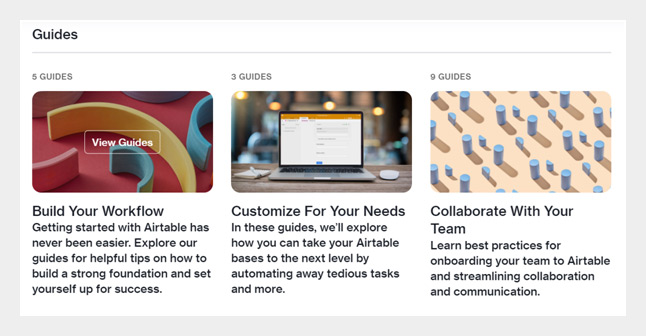
SaaS onboarding example #3: Salesflare
Business of all sizes can rely on Salesflare to automate CRM and email outreach for a significant increase in sales.
As part of its onboarding process, Salesflare offers a Product tour that is accessible to anyone, without requiring registration.
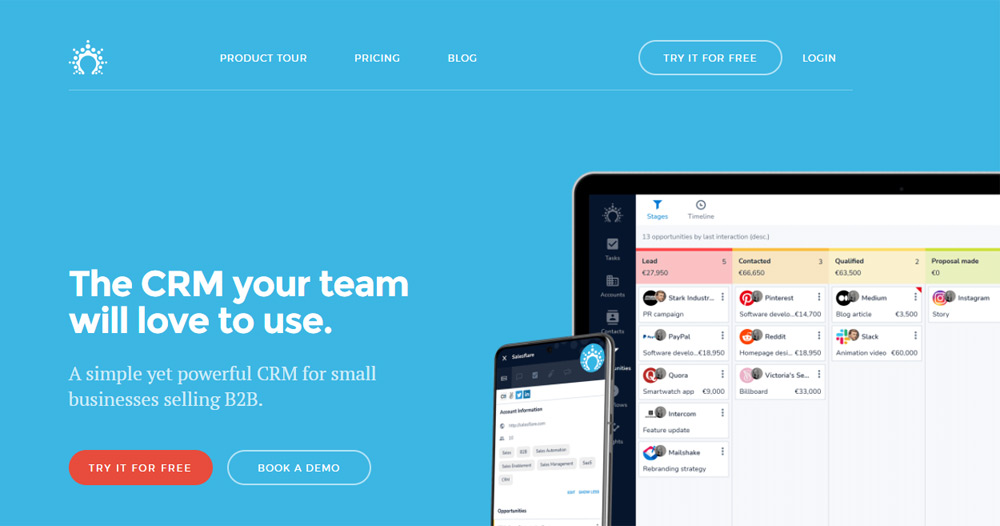
The Product tour consists of several pages, each of which covers every single feature offered by the product. In this way, users can get a sense of what the product is about as well as its features, so they can become familiar with it and understand its value before even beginning to use it.
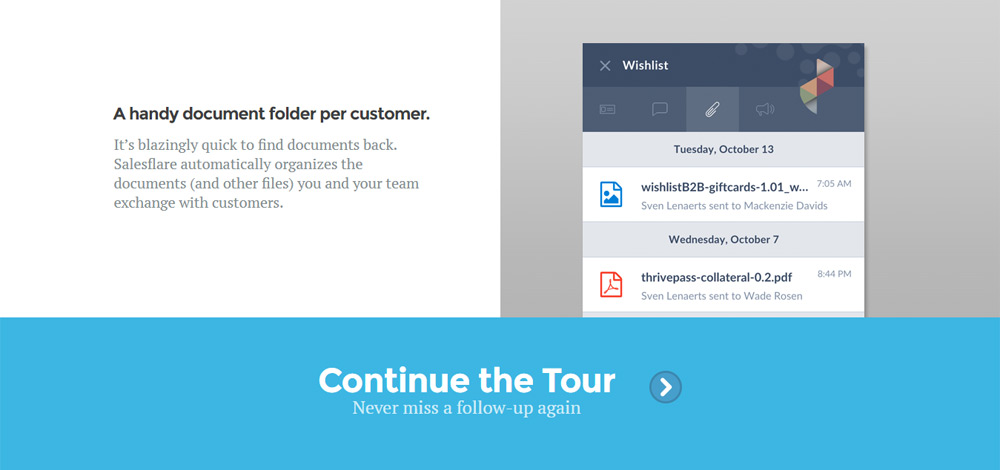
Salesflare also offers a trial period, which lets users get a first-hand experience with the product and understand whether it would suit their needs and preferences.
When users start their free trial, the platform provides them with a product tour, a checklist, a help widget, and much more. The knowledge base includes guides and video tutorials to assist users in learning the features and steps of the product.
SaaS onboarding example #4: Feedier
Feedier is a Feedback management platform that lets you collect feedback from your customers in a gamified and engaging way.
It provides users with a free trial that allows them to explore the platform, as well as a comprehensive resource section that contains detailed guides organized in order to ensure that they understand all aspects of the platform, from what it is to handling integrations and viewing analytics.
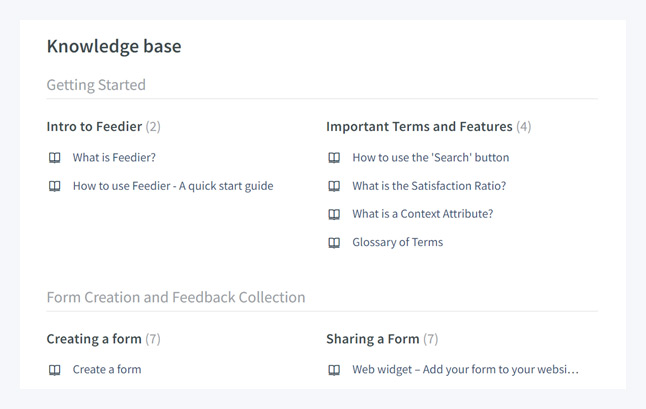
To enhance the overall user experience, Feedier also supplements its user onboarding process with timely email onboarding sequences.
SaaS onboarding example #5: Box
A company called Box specializes in developing and providing cloud-based content management, collaboration, and file-sharing solutions for businesses.
Users of Box are greeted with a big, clear call-to-action along with a Live Chat feature that is available to answer any questions they may have before or after they’ve started using the platform.
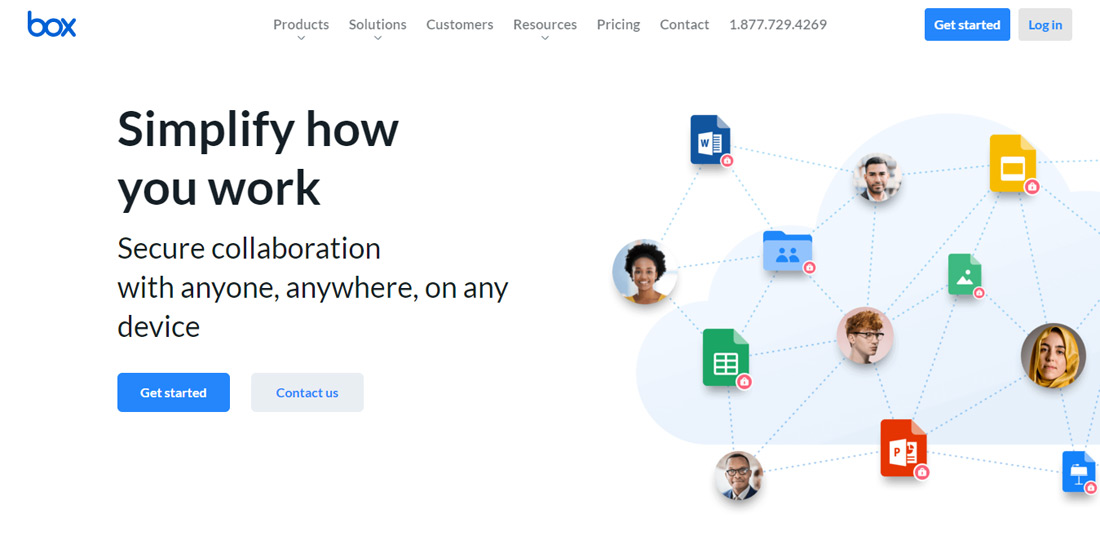
Furthermore, its resource section provides users with all the information they need about its platform and the features it offers.
The Resources page gives users access to multiple content formats that provide solutions to their issues and answers to their questions.
How to provide the best onboarding experience to your users
Given that you’ve seen a few examples of great SaaS user onboarding strategies, you might now have a better understanding of what it means to offer a great onboarding experience.
By now, you might be wondering how you can provide the same level of onboarding to your users.
The following are some valuable tips on how to achieve this.
1. Identify the critical aspects of your product or service
The first step to developing a winning onboarding strategy is identifying the critical points of your platform. In other words, you need to know which aspects of your product or service users might find difficult to understand or use.
As soon as you identify them, take notes and incorporate them into the knowledge base, FAQ section, product tour, or whichever method you prefer.
2. Support users with resources and other types of help
After you’ve identified all the critical points in the previous step, you can convert them into explanations for your users.
In order to achieve this, you may want to create articles, video tutorials, interactive product tours, and whatever else you desire.
Additionally, you might want to set up a Live Chat and Support Service to answer and solve any of your users’ questions easily and quickly.
3. Use user onboarding tools
There are currently a large number of SaaS user onboarding tools available on the web that can help you improve your onboarding strategy. Therefore, you might consider using them for better results.
4. Analyze metrics constantly
Obviously, the onboarding process needs constant improvement. However, in order to implement improvements, you must be able to understand what isn’t working.
The best way to do so is to constantly check the analytics and metrics, such as churn, and then identify the pain points that need to be addressed in order to guarantee a better onboarding experience.
Conclusions
Developing and implementing a user onboarding strategy can benefit your SaaS company in a number of ways, beginning with a higher customer satisfaction level and ending with a higher sales volume.
Hopefully, the SaaS onboarding examples listed throughout the article gave you an idea of how you can do the same for your business and ensure users are quickly and easily convinced of its value.
We appreciate you taking the time to read this blog post. We hope it was informative for you.
If you want to read more, please check out this article on the SaaS development business model for your startup.
